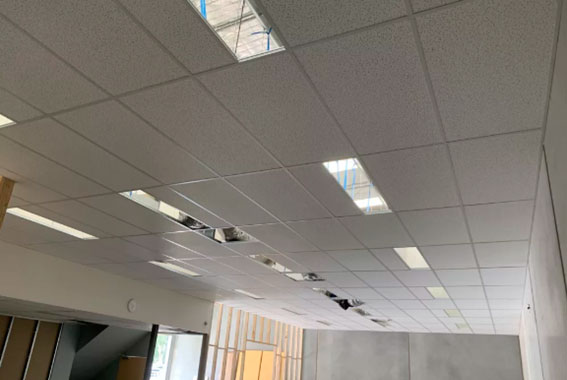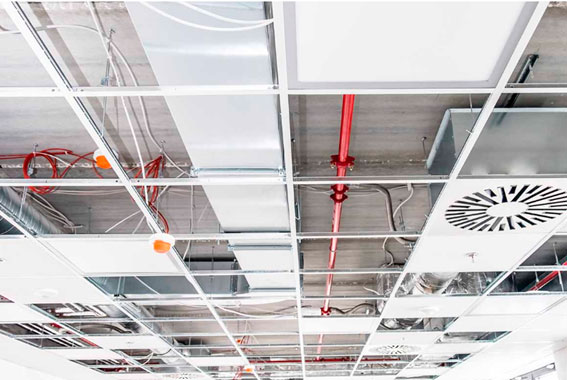- 2655 - Philmont Av Huntingdon Valley - PA - 19006
- (973) 393-4357
- Estimate Free


Other advantages of the false ceiling
A lowered ceiling can help save energy. A lower ceiling means there is less space in the room to heat and cool, even with the same footprint and floor plan.
A false ceiling can also reduce noise. When acoustic performance is important, there are two ceiling tile classifications to look at:
• Noise Reduction Coefficient (NRC) measures how good a tile is at absorbing sound rather than reflecting it back into the room. Higher NRCs mean quieter environments.
• Ceiling attenuation class (CAC) measures how good the tiles are at stopping noise from traveling out of the room. Higher CACs mean better sound insulation.
The relative ease of replacing ceiling tiles also makes it simple to maintain the room’s appearance. Damaged or stained boards can be replaced in minutes without any of the dust and paint splatters that accompany drywall ceiling repairs. And when it’s time for a design update, a new set of tiles can give your room’s ceiling a fresh look.
What about the services on display?
Exposed services are an alternative to false ceilings. In a space with exposed services, there is no suspended ceiling or drywall to create a plenum. Instead, the ducts, pipes and cabling of building systems are completely visible.
In commercial buildings, exposed services can create a modern, cutting-edge feel, which may explain why this design strategy has become increasingly popular in high-end spaces.
Omega Projects LLC is a company with 10 years of experience in the construction market, specializing in areas such as Metal Framing and Acoustic Ceilings